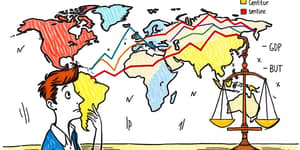
Despite remarkable advances in medicine, billions of people still face stark obstacles to basic care. By understanding these gaps and mobilizing capital, investors can drive both social impact and financial returns.
Across continents, vulnerable populations in low- and middle-income countries bear the heaviest burden of preventable illness and death. Children in poorer nations remain 13 times more likely to die before age five than their wealthier peers. Every year, 1.8 million lives are lost due to this disparity—lives that could be saved with targeted investment.
Maternal mortality, though reduced by over 40% since 2000, still inflicts tragedy: 94% of these deaths occur in low- and lower-middle-income settings. Even in high-income countries, Indigenous and ethnic minority groups experience higher pregnancy-related fatalities. The persistence of these gaps represents a profound failure to ensure basic human rights and a compelling call for action.
Healthcare spending varies dramatically. The United States dedicates 19% of GDP to health, Europe about 12%, while India and Southeast Asia allocate only 3–5%. In Africa, health systems receive roughly 5% of GDP—yet this represents just 2% of global health expenditure.
Underinvestment leads to crumbling infrastructure, chronic staffing shortages, and fragmented services. Without sufficient primary care, immunization coverage stalls and safe childbirth services remain inaccessible. Experts warn that, without urgent funding, we may witness 700,000 additional maternal deaths and 8 million more under-five fatalities by 2030.
Traditional aid alone cannot bridge the gap. Investors must explore blended finance combining diverse capital sources to derisk projects and amplify scale. By pairing philanthropic grants with government guarantees and private equity, health initiatives can become bankable and sustainable.
Government-backed institutions, like development finance corporations, offer favorable terms that attract private capital. Platform-based healthcare ecosystems—integrating telemedicine, supply chain management, and local clinics—demonstrate how digital solutions can transform delivery even in remote areas.
Success in emerging health markets hinges on rigorous due diligence and adaptive strategies. Investors should diversify across geographies and project types to mitigate currency and political risk. Building joint ventures with trusted local partners ensures regulatory compliance and cultural alignment.
Adopting value-based care models that reward outcomes rather than volume can align incentives among providers, payers, and communities. Early adopters of AI-driven diagnostics and mobile health tools gain both data insights and brand leadership.
Climate and sustainability concerns are rising. Health systems account for over 5% of greenhouse gas emissions—investments in renewable energy, efficient logistics, and eco-friendly infrastructure not only reduce carbon footprints but also lower operating costs over time.
Regulatory complexity and infrastructure deficits often deter investors—but real-world case studies show that these challenges are surmountable. Thorough market assessments, flexible financing structures, and strong local alliances turn perceived risks into manageable variables.
Building strong local partnerships and networks is a cornerstone of success. Aligning with ministries of health, community organizations, and impact-driven NGOs creates a supportive ecosystem. Regular performance monitoring and transparent reporting foster trust and enable continuous improvement.
Strategic risk management also involves staying abreast of geopolitical shifts, currency fluctuations, and policy reforms. Scenario planning and hedging instruments further protect returns, ensuring that social goals are met without sacrificing financial viability.
Robust impact measurement systems are vital. Metrics such as lives saved, treatment adherence rates, and cost per disability-adjusted life year (DALY) averted offer clear evidence of success. Investors should incorporate these benchmarks into funding agreements to drive accountability.
Scaling effective models requires shared learning. Forums that bring together investors, implementers, and policymakers accelerate innovation. By documenting best practices—from all-payer rate-setting reforms to decentralized care networks—stakeholders can replicate successes across regions.
As digital health tools evolve, data interoperability and patient privacy become priorities. Fair data governance frameworks not only uphold human rights but also enhance research and development of new therapies.
The chasm in global health is more than a moral crisis—it is an investment opportunity of unprecedented scale. By channeling capital into evidence-based interventions and innovative delivery models, investors can achieve tremendous social and financial returns while saving millions of lives.
Emerging health markets offer untapped potential: rising middle classes, rapid urbanization, and tech-savvy populations hungry for quality care. With thoughtful strategies, project developers and financiers can transform these “sleeper markets” into engines of sustainable growth.
Now is the moment to act. Collaborative, impact-driven investments will not only meet the United Nations’ Sustainable Development Goals but also redefine the future of healthcare. By bridging disparities today, we secure a healthier, more equitable world for generations to come.
References













